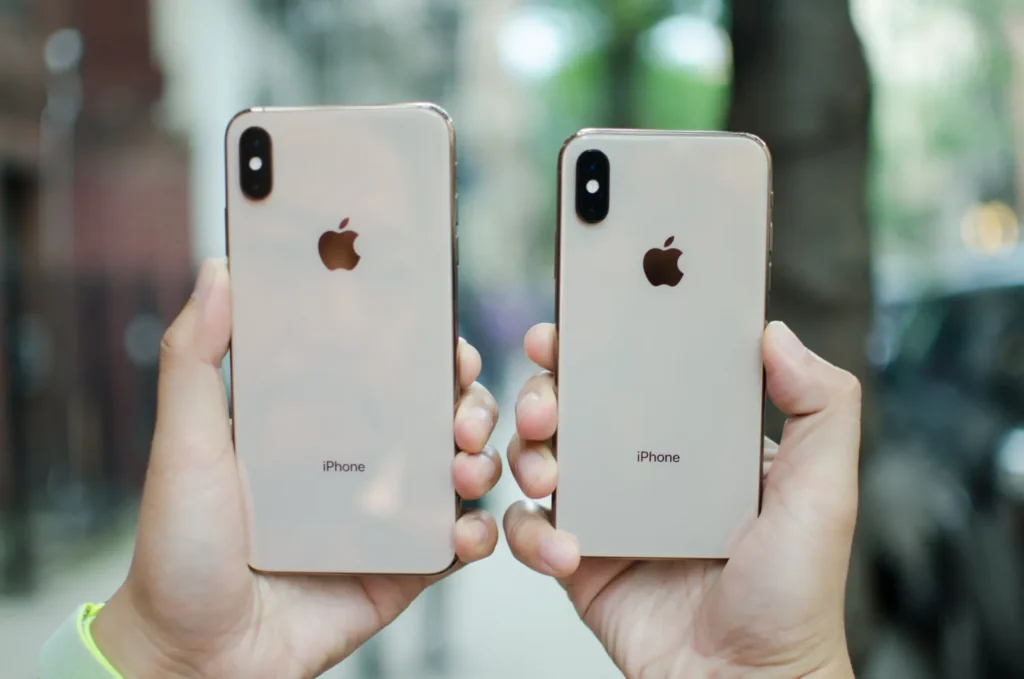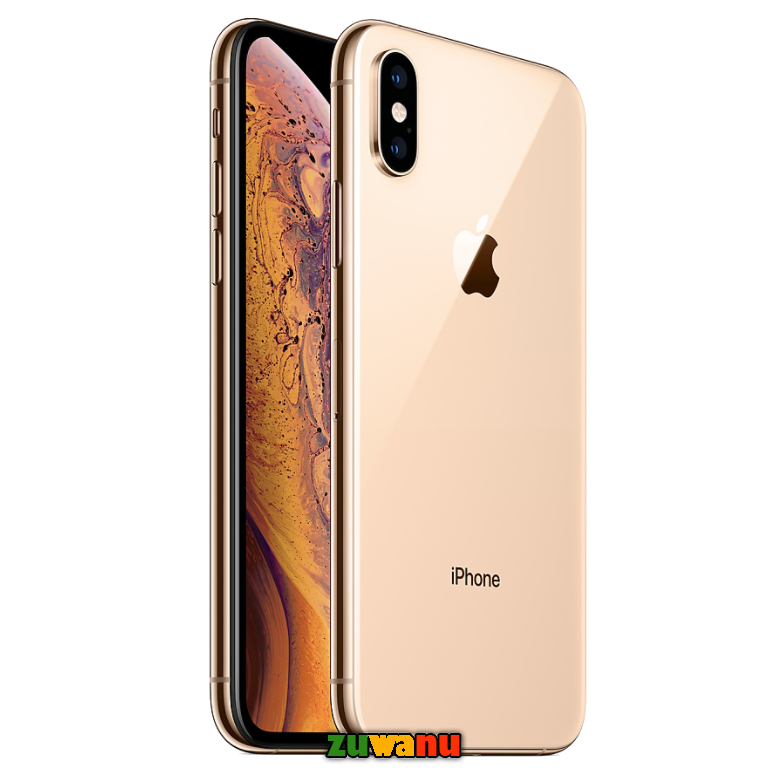iPhone XS Max: A Comprehensive Review

Introduction: Display Excellence
The iPhone XS Max has garnered attention for its exceptional features, particularly its Super Retina OLED display. Boasting a generous 6.5-inch screen, this device offers a cinematic viewing experience supported by HDR10 and Dolby Vision, enhancing colors and making images truly lifelike. With 625 nits of brightness (HBM), visibility remains clear even under direct sunlight. The 19.5:9 aspect ratio contributes to an immersive display, achieving an impressive 84.4% screen-to-body ratio.
Performance Powerhouse
Powering the iPhone XS Max is the formidable Apple A12 Bionic chipset, fabricated on a cutting-edge 7nm process. This hexa-core processor, featuring 2×2.5 GHz Vortex and 4×1.6 GHz Tempest cores, ensures swift and efficient performance across all tasks. The Apple GPU with 4-core graphics elevates the device’s graphical capabilities, delivering seamless gaming and multimedia experiences. Running on iOS 12, with the option to upgrade to iOS 17.3.1, users are assured access to the latest features, security updates, and improvements. The absence of a card slot is compensated by ample internal storage options: 64GB with 4GB RAM, 256GB with 4GB RAM, and an impressive 512GB with 4GB RAM, with NVMe technology ensuring speedy data access and smooth multitasking.
Photography Prowess
The iPhone XS Max doesn’t just excel in performance but also sets a new standard in mobile photography. Featuring a dual-camera system, the main camera incorporates a 12 MP wide lens with an aperture of f/1.8 and a 12 MP telephoto lens with an aperture of f/2.4. This combination, coupled with dual-pixel phase-detection autofocus (PDAF) and optical image stabilization (OIS), ensures sharp and clear images even in challenging conditions. The telephoto lens provides 2x optical zoom, preserving image quality even when zooming in. Additional features like the Quad-LED dual-tone flash and HDR capabilities further enhance the camera’s performance, delivering stunning photos and panoramas. Video recording capabilities are equally impressive, supporting 4K at 24/30/60fps and 1080p at 30/60/120/240fps, with HDR and stereo sound recording. On the front, a 7 MP selfie camera with an f/2.2 aperture and support for 1080p video recording at 30/60fps ensures high-quality self-portraits and video calls. The inclusion of a SL 3D depth/biometrics sensor enables Face ID, Apple’s facial recognition technology, providing a secure and convenient method of device unlocking and transaction authentication.
Audio and Connectivity
The iPhone XS Max offers an exceptional audio experience, with stereo speakers delivering immersive sound quality for a rich multimedia experience. While lacking a traditional 3.5mm headphone jack, the device compensates with widespread adoption of wireless audio solutions. Connectivity options are robust, with support for Wi-Fi 802.11 a/b/g/n/ac on dual bands ensuring fast and reliable internet access. Bluetooth 5.0 with A2DP and LE support facilitates wireless communication with other devices. Accurate and efficient location tracking is enabled through GPS, GLONASS, GALILEO, and QZSS, while NFC capabilities allow for contactless payments and interactions. The device features a Lightning port for wired connections and charging, supporting USB 2.0. With a 3174 mAh non-removable Li-Ion battery, the iPhone XS Max ensures long-lasting usage. Wired charging at 15W with PD2.0 technology enables rapid charging, with the device capable of reaching 50% battery in just 30 minutes. Wireless charging is also supported, thanks to Qi technology.
Aesthetics and Color Options
Available in three sophisticated color options—Space Gray, Silver, and Gold—the iPhone XS Max offers users a choice of finishes to suit their style preferences.
Models and Pricing
Identified by several model numbers—A1921, A2101, A2102, A2104, and iPhone11,6—the iPhone XS Max adheres to SAR (Specific Absorption Rate) values indicating radiation levels. Pricing initially began at $220.94, €280.99, or £219.95, reflecting its premium status in the smartphone market.
Performance Metrics

Various benchmark tests provide insights into the iPhone XS Max’s performance. AnTuTu reported a score of 353210 (v7), while GeekBench recorded a score of 11432 (v4.4). GFXBench achieved 47fps (ES 3.1 onscreen), highlighting the device’s robust graphical performance. Display performance metrics, including an infinite contrast ratio (nominal) and 4.516 in sunlight, ensure a clear and vibrant viewing experience. Camera tests demonstrated impressive photo and video capabilities, while audio quality metrics indicated clear and high-quality sound delivery. The battery endurance rating, recorded at 79 hours, underscores the iPhone XS Max’s ability to handle day-to-day tasks without compromising on battery life.
Conclusion:
In conclusion, the iPhone XS Max embodies Apple’s commitment to excellence in smartphone technology. From its premium design and construction to its powerful performance and impressive camera capabilities, the device caters to users who demand the best. The seamless integration of hardware and software, along with the iconic iOS experience, ensures the iPhone XS Max remains a flagship device that stands the test of time. As technology evolves, Apple’s dedication to innovation ensures each new iteration of the iPhone pushes the boundaries of what is possible. The iPhone XS Max, with its blend of style, substance, and cutting-edge features, remains a timeless masterpiece in the world of smartphones.
Table of Features:
| Feature | Specification |
|---|---|
| Network Technology | GSM / CDMA / HSPA / EVDO / LTE |
| Launch | Announced: 2018, September 12 |
| Released: 2018, September 21 | |
| Body | Dimensions: 157.5 x 77.4 x 7.7 mm |
| Weight: 208 g | |
| Build: Glass front and back, stainless steel frame | |
| SIM: Nano-SIM and eSIM or Dual SIM (China) | |
| IP68 dust/water resistant | |
| Apple Pay (Visa, MasterCard, AMEX certified) | |
| Display | Type: Super Retina OLED, HDR10, Dolby Vision |
| Size: 6.5 inches | |
| Resolution: 1242 x 2688 pixels | |
| Protection: Scratch-resistant glass, 3D Touch | |
| Platform | OS: iOS 12, upgradable to iOS 17.3.1 |
| Chipset: Apple A12 Bionic (7 nm) | |
| CPU: Hexa-core (2×2.5 GHz Vortex + 4×1.6 GHz Tempest) | |
| GPU: Apple GPU (4-core graphics) | |
| Memory | Card slot: No |
| Internal: 64GB 4GB RAM, 256GB 4GB RAM, 512GB 4GB RAM | |
| NVMe | |
| Main Camera | Dual: 12 MP, f/1.8 (wide), 12 MP, f/2.4 (telephoto) |
| Features: Quad-LED dual-tone flash, HDR | |
| Video: 4K@24/30/60fps, 1080p@30/60/120/240fps, HDR, stereo sound rec. | |
| Selfie camera | Single: 7 MP, f/2.2 (standard) |
| Features: HDR | |
| Video: 1080p@30/60fps, gyro-EIS | |
| Sound | Loudspeaker: Yes, with stereo speakers |
| 3.5mm jack: No | |
| Comms | WLAN: Wi-Fi 802.11 a/b/g/n/ac, dual-band, hotspot |
| Bluetooth: 5.0, A2DP, LE | |
| Positioning: GPS, GLONASS, GALILEO, QZSS | |
| NFC: Yes | |
| Radio: No | |
| USB: Lightning, USB 2.0 | |
| Features | Sensors: Face ID, accelerometer, gyro, proximity, compass, barometer |
| Battery | Type: Li-Ion 3174 mAh, non-removable |
| Charging: 15W wired, PD2.0, 50% in 30 min (advertised) | |
| Wireless: Qi | |
| Misc | Colors: Space Gray, Silver, Gold |
| Models: A1921, A2101, A2102, A2104, iPhone11,6 | |
| SAR: 1.16 W/kg (head), 1.17 W/kg (body) | |
| SAR EU: 0.99 W/kg (head), 0.99 W/kg (body) | |
| Price | $220.94 / €280.99 / £219.95 |
| Tests | Performance: AnTuTu – 353210 (v7) |
| GeekBench – 11432 (v4.4) | |
| GFXBench – 47fps (ES 3.1 onscreen) | |
| Display: Contrast ratio – Infinite (nominal), 4.516 (sunlight) | |
| Camera: Photo/Video | |
| Loudspeaker: Voice 70dB / Noise 74dB / Ring 84dB | |
| Audio quality: Noise -93.7dB / Crosstalk -82.8dB | |
| Battery (old): Endurance rating 79h |

